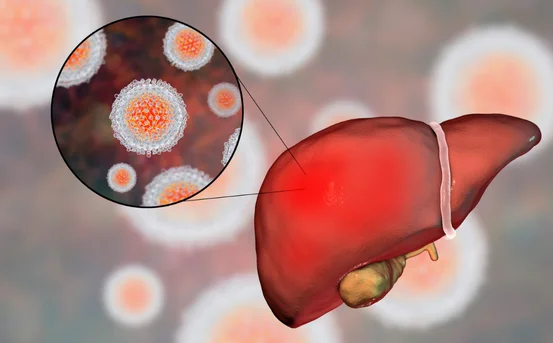These surgeries, commonly called neurosurgery, are intricate medical procedures used to treat ailments that affect the skull, brain, or other structures around it. These procedures are essential to treat brain injuries that are traumatic as well as neurological disorders, tumors, and congenital anomalies. Thanks to advances in neurosurgical techniques, modern cranial surgeries have improved in precision, are less involved, and more secure than ever.
Understanding the various types of cranial surgery can help patients and caregivers make educated choices, particularly when faced with an illness that could require surgery. The types of cranial surgery are crucial to understand in order to navigate treatment options effectively.
Why Cranial Surgery is Performed
The procedure is usually suggested when medications or other treatment options fail to address crucial conditions that concern the skull or the brain. Here are a few reasons that a cranial procedure may be required:
- To eliminate the brain tumours (benign and malignant)
- To ease the pressure on the brain caused by injury or the accumulation of fluid
- To treat brain aneurysms and arteriovenous malformations (AVMs)
- To manage epilepsy if seizures cannot be controlled with medication
- For the repair of skull fractures or congenital skull defects
- To eliminate abscesses or hematomas within the brain
- For treating movement disorders such as Parkinson’s disease, you can use Deep Brain Stimulation (DBS)
Each of these situations needs a particular surgical method dependent on the extent of the issue and the location of the brain.
Types of Cranial Surgery
- Craniotomy
The Craniotomy is among the most popular kinds of cranial surgery. It involves removing a small portion from the skull (called the bone flap) to gain access to the brain. Following surgery the flap of bone is fixed and replaced.
Uses:
- Brain tumor removal
- Aneurysm clipping
- Trauma repair
- Hematoma evacuation
There are a variety of surgical procedures depending on the region of the brain that is being addressed, which includes frontal temporal, parietal and occipital. Modern procedures such as awake craniotomy let surgeons track the functions of the brain during surgery, particularly for tumors in the motor or language regions.
- Endoscopic Endonasal Surgery (Minimally Invasive Cranial Surgery)
This method is minimally invasive. It makes use of an endoscope that is inserted through the nose to reach and eliminate lesions or tumors on the skull’s base or pituitary gland.
Uses:
- Pituitary tumors
- Tumors of the skull base
- CSF (cerebrospinal fluid) leak repair
Benefits:
- There are no external surgical incisions
- Shorter hospital stays
- Speedier recovery
- Less trauma to brain tissue
- Stereotactic Brain Surgery
Stereotactic surgery utilizes 3D imaging and computer-controlled instruments to precisely identify and treat the brain’s deepest regions. the brain while causing minimal harm to the surrounding tissues.
Uses:
- The biopsy of brain tumors deep-seated
- Deep Brain Stimulation (DBS) Implantation
- Surgery for epilepsy
- Radiation therapy targeted (stereotactic radiosurgery)
Benefits:
- High-quality and precise
- Very minimally infected
- Short recovery time
- Deep Brain Stimulation (DBS)
DBS is a type of functional neurosurgery procedure where electrodes are placed in certain areas of the brain in order to send electrical impulses.
Uses:
- Parkinson’s disease
- Essential tremor
- Dystonia
- Obsessive-Compulsive Disorder (OCD)
How it Works:
An electric device powered by batteries (neurostimulator) will be placed within the chest. It transmits signals to electrodes within the brain. This aids in controlling irregular brain activity.
- Skull Base Surgery
This type of surgery is used to treat abnormalities or tumors around the base of the skull as well as around the brainstem.
Uses:
- Acoustic neuromas
- Meningiomas
- Chordomas
- Cranial nerve tumors
Approaches:
- The traditional (open) surgical procedure for the skull’s base
- The endoscopic surgery for the skull’s base (minimally invasive)
- These procedures typically require the assistance of neurosurgeons as well as ENT specialists because of the intricate anatomy.
Types of Cranial Surgeries
A hemispherectomy is a procedure for taking out or destroying one of the cerebral hemispheres of the brain. It is among the most invasive procedures but it can be needed to treat epilepsy that is severe.
Uses:
- Children with epilepsy who are unable to control it.
- Hemimegalencephaly
- Sturge-Weber syndrome
Outcomes:
While it may sound like a lot however, patients who are young often get better after a while because of the brain’s flexibility and the ability to change its wiring.
- Hematoma or Abscess Evacuation
The procedures involved are the removal surgically from blood clots (hematomas) or cavity filled with pus (abscesses) within the brain.
Types of Hematomas Treated:
- Subdural Hematoma
- Hematomas of the epidural
- Intracerebral hemorrhage
Approach:
Based on the dimensions and location Neurosurgeons can make use of a burr hole or a craniotomy in order to drain.
Ventriculostomy or Shunt Placement
These are the procedures used to relieve pressure on the brain that is that is caused by the hydrocephalus (buildup of cerebrospinal fluid).
Risks associated with Cranial Surgery
While cranial surgeries are typically life-saving, they also come with potential dangers, such as:
- Infections or bleeding
- Neurological deficits (speech, vision, movement)
- Swelling or seizures
- Anesthesia-related reactions
- Cognitive changes
However, new technologies like intraoperative MRI and computer navigation and microsurgical instruments have dramatically increased safety and results.
Conclusion
The field of cranial surgery encompasses a vast array of techniques that are that are designed to detect, manage and treat various ailments that affect the skull and brain. From traditional craniotomies, to advanced endoscopic procedures that are minimally invasive every type of cranial procedure plays crucial roles in the field of neurosurgical treatment.
With the constant advancements regarding neurosurgery procedures are now more efficient and safer providing patients with hope relief, comfort, and sometimes the chance to live again. If you or someone close to you has a condition that affects the brain you should consult a certified neurosurgeon to determine the most effective treatment options that are tailored to your specific needs.























